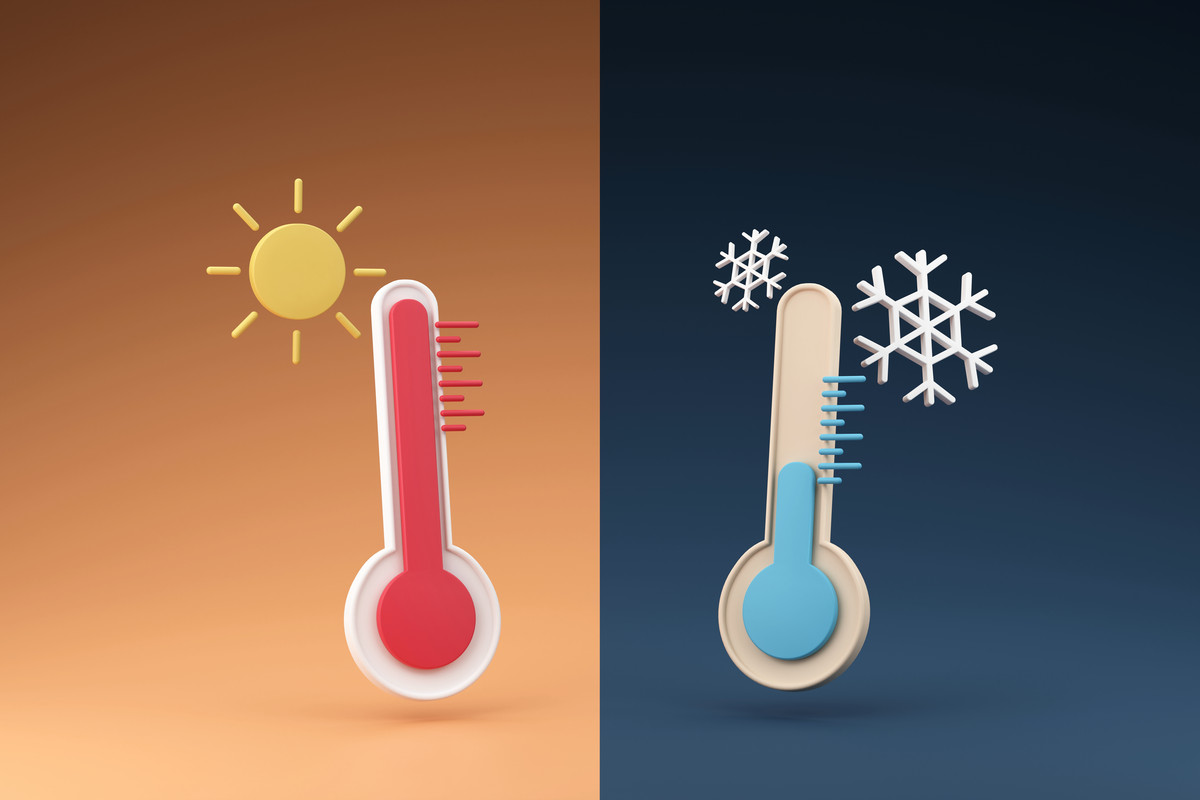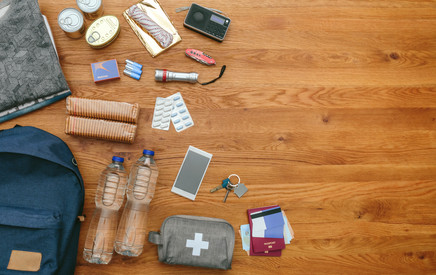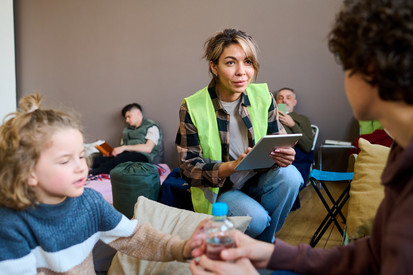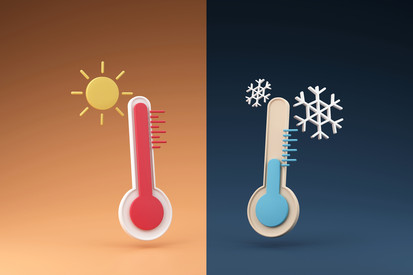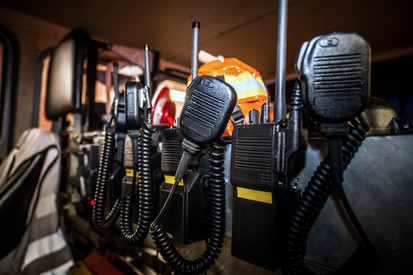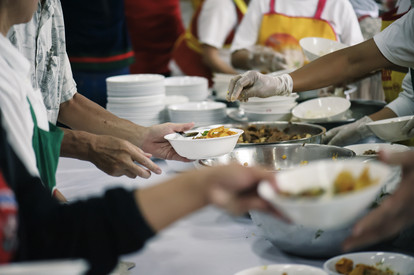Helping on Hot Days
Work is particularly strenuous in hot weather. Consider the following ten tips.
1. Wear the right clothing
Wear loose and airy clothing that is long, loose, and light-colored. Breathable functional clothing, such as those found in sports stores, is good as it protects you from the sun. Wear a cap or hat and sturdy, ankle-high shoes to prevent injuries.

2. Stay hydrated
Drink at least half a liter per hour, such as mineral water, tea, or fruit juice spritzers. Avoid very cold drinks.
3. Use sunscreen
Protect your skin with sunscreen and reapply regularly, even on cloudy days.
4. Take enough breaks
On hot days, we cannot work as much as usual. Take regular breaks in the shade and preferably work in the morning when it's not as hot.

5. Work in a team
Deployments are exciting, and we often don't realize how exhausted we actually are. Work in a team with two other people. Remind each other to take breaks and drink water. If you notice someone in the team isn't feeling well, bring them to the shade, give them water, and call for help from people with medical knowledge. Injuries need to be treated promptly.
Packing list for hot days

Have you packed everything essential?
- Take a photo of your ID card, health insurance card, driver's license (if available), and vaccination certificate on your smartphone
- Your smartphone, a charging cable, a plug adapter, and a fully charged power bank
- A dust mask
- Plenty of water and enough food for the day
- Sun protection, including a hat, sunscreen, and sunglasses
- Protective clothing, such as work gloves, a high-visibility vest, safety goggles, and ear protection
- Rain gear
- Spare clothing
- Important medications like allergy medication
- Notebook and pens
- Cash and debit card
- Lightweight backpack
Video: Help on hot dates
The YouTube video is activated by clicking or touching it. This transmits data to the provider. To the privacy policy.
The YouTube video is activated by clicking or touching it. This transmits data to the provider. To the privacy policy.

7. Pay attention to hygiene
Wash your hands with soap for at least 20 seconds before drinking, eating, or smoking, and during longer breaks. Alternatively, use hand sanitizer.
8. Recover after deployment
Get plenty of rest and drink enough fluids after the deployment.
9. Protect yourself against tetanus
A tetanus vaccination is particularly important because 2 out of 10 people with tetanus die from it. Tetanus, also known as lockjaw, can arise from even a small amount of dirt in a minor wound.

1. Wear the correct clothing
Wear warm clothing. It should be breathable and water-resistant. It's best to bring spare clothing so you can change out of sweaty clothes. Also, wear a hat and gloves to keep warm. Wear highly visible clothing, such as a high-visibility vest. Wear ankle-high, sturdy winter boots with a rugged tread or spikes. Tip: Insulating insoles keep your feet warm.
2. Watch out for dangers from above
Icicles and snow can fall from roofs and trees, potentially injuring people. If there's danger, inform the owner of the property or notify emergency services. If that's not possible, then cordon off the hazardous area.
3. Work only in safe areas
Don't work in places where you could fall. Don't enter buildings that could collapse. Watch out for objects like branches or roof tiles that could fall. Another danger: After storms, loose objects may be lying around. Sometimes the ground may be covered with snow or leaves. Test it with a stick to see if it's safe to walk on. And don't walk on ice surfaces.
4. Watch out for slippery roads and pathways
Especially in front of building entrances, it can get slippery quickly. Wipe down slippery areas and clean your shoes carefully to avoid falls.
Cold weather packing list
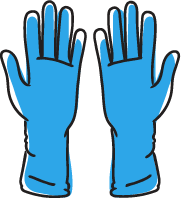
Have you packed all the essentials?
- Take a photo of your ID card, health insurance card, driver's license if available, and vaccination record
Your smartphone, a charging cable, adapter, and a fully charged power bank
Drinks (such as warm tea in a thermos flask) and food for the day
Protective clothing (e.g., work gloves, high-visibility vest, safety goggles, and ear protection)
Warm change of clothes
Emergency blanket
Rain gear
For snow: Sun protection (sunscreen and sunglasses)
Important medications like allergy medication
Equipment (e.g., snow shovel or flashlight)
Notebook and pens
Cash and debit card
Lightweight backpack
Video: Help on cold days
The YouTube video is activated by clicking or touching it. This transmits data to the provider. To the privacy policy.
The YouTube video is activated by clicking or touching it. This transmits data to the provider. To the privacy policy.
